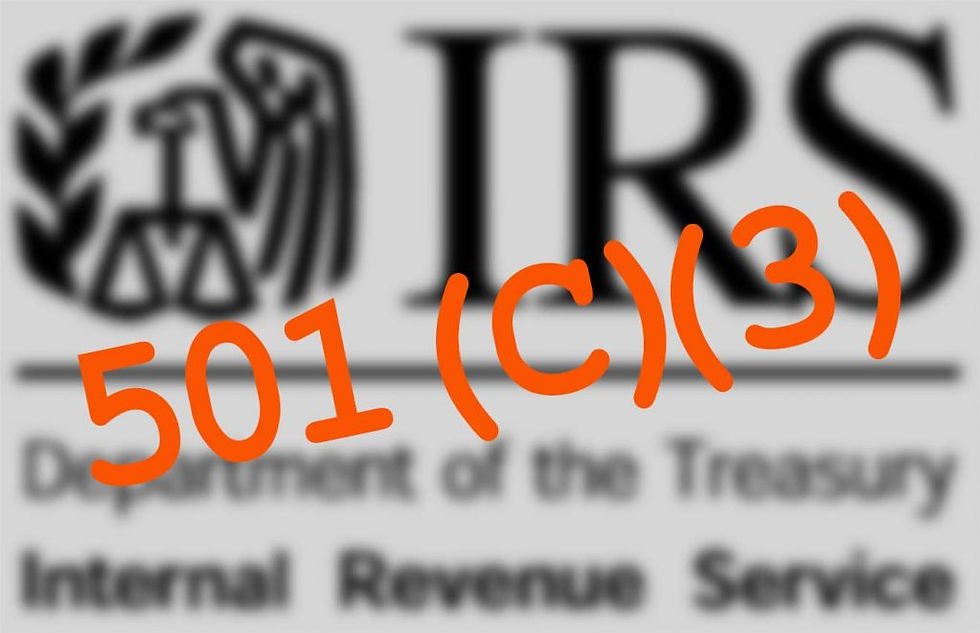How to start a 501c3 organization? advantages of tax-exempt status and the legal obligations
- EZ 501c3
- May 15, 2023
- 3 min read
Introduction
Imagine being able to significantly improve your neighbourhood while also reaping the rewards of tax-exempt status and greater donor reputation. All of these advantages and more can be attained by establishing a 501c3 organisation, but the procedure might be intimidating. There are numerous processes involved in establishing a nonprofit organisation, from creating a goal statement to submitting complicated tax forms.
However, beginning a 501c3 organisation can be a lucrative and enjoyable experience with the correct direction and planning. This article will lead you through the procedures you must follow in order to establish a 501(c)(3) organisation, as well as the benefits of having tax-exempt status and the associated legal responsibilities.
Starting a 501c3 organisation can be a potent approach to effect permanent change, whether you are passionate about a topic or want to make a difference in your community.

What is a 501c3 Organisation?
Have you ever thought about establishing a nonprofit organisation to help your community? Perhaps you're considering a charitable endeavour, such as researching mental disease or aiding the underprivileged. To use your own not-for-profit to have the same kind of impact, you have actually been waiting for a very long time.
Always bear in mind that you want your not-for-profit organisation to prosper in the same way as other businesses, regardless of what your goal may be. Never forget that your nonprofit organisation may be asked to submit reports to state and federal entities. The 501c3 status of your nonprofit organisation is crucial at this point. Consequently, it is crucial that you comprehend how to establish a 501c3.
The United States' Internal Revenue Code (IRC) Section 501c3 designates nonprofit organisations as having a special tax status. The organisation has this status, which permits it to receive money from foundations and governmental entities in addition to being free from paying federal taxes.
The 501c3 expressly addresses 27 different categories of tax-exempt charitable groups. In general, it exists to advance public welfare, support regional, octogenarian, or global athletic events, or stop cruelty to children or other animals.

How to start a 501c3 Organisation?
The first step in creating a 501c3 organisation is creating a mission and purpose statement. What social issue or cause are you attempting to address? What kind of change would you like to see in your community? Your mission statement ought to be inspiring, brief, and clear. It should serve as a tool for decision-making and express the goals and values of your business.
After identifying your mission and purpose, you must write a business plan that outlines your goals, strategies, and budgetary restrictions. Your plan should include information about your target market, fundraising methods, staffing requirements, and programmes and services you offer. It should also include a budget that details your expected expenses and income.
For the organisation to receive 501(c)(3) accreditation, it must abstain from any political activity including lobbying. This means that the organisation cannot endors or promote any political party, candidate, or campaign. The organisation is also forbidden from engaging in any actions that might be seen as partisan, political, or intended to have an impact on legislation.
Your organisation must also have an effective organisational structure, such as a board of directors or trustees that oversee the organization's operations. The organization's financial practises, governance, and financial records must all be transparent and open to public inspection. These are crucial requirements for 501c3, according to the IRS.
The organisation is required to provide annual reports and tax returns to the IRS in order to maintain its tax-exempt status.
For 501c3 eligibility, choosing your mission and vision is a requirement. This serves as the cornerstone of your business, guiding all decisions and actions moving forward. The goals, target audience, and purpose of your organisation should be made clear in the mission statement. Your vision statement should include a list of your organization's long-term goals.
Once you've established your organization's goals and vision, it's time to choose a name. Your name ought to be brief, memorable, and unambiguous. It should also state the goals and tenets of your business.

Key Takeaways
One of the most crucial steps in the process of establishing a non-profit organisation is obtaining 501c3 tax-exempt status. You may ensure that your organisation complies with IRS requirements and is in a good position to carry out its mission and set its goals by using the advice in this handbook to submit a successful 501c3 application procedure.
A robust board of directors, a clear budget and financial strategy, the development of a compelling mission statement, the upkeep of comprehensive and accurate records, and, where necessary, expert aid are some things to think about. You may effectively negotiate the 501c3 requirements and have a good impact on your community with commitment, focus, and careful planning.



Comments